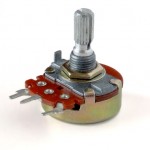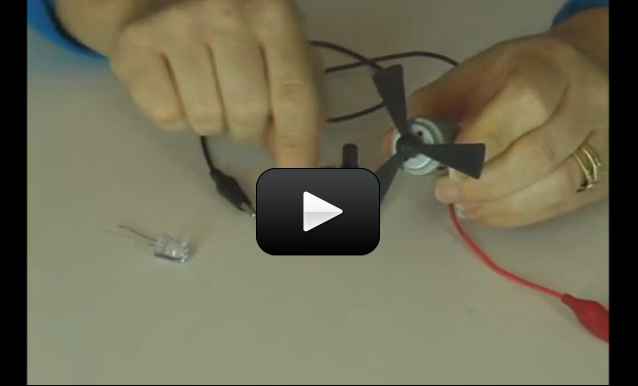 So now you know how to hook up a motor, and even wire it up to a switch so that it goes in forward and reverse. But what if you want to change speeds? This nifty electrical component will help you do just that.
So now you know how to hook up a motor, and even wire it up to a switch so that it goes in forward and reverse. But what if you want to change speeds? This nifty electrical component will help you do just that.
Once you understand how to use this potentiometer in a circuit, you’ll be able to control the speed of your laser light show motors as well as the motors and lights on your robots. Ready?
Please login or register to read the rest of this content.


A little warm, yes… hot – no. 🙂
sorry i meant my potentiometer.
is it okay if my motor starts getting warm
You’re so welcome! I am so excited that you are getting your hands on building real projects! 🙂 My own family is just finishing up the Open ROV project, so do keep in touch if you decide to get one also. 🙂
Hi Aurora!
Thank you for your advise. Dad is planing on maybe having 4 props on the back, and wiring them so they can rotate independently at different speeds, enabling the ROV to switch it’s direction slightly, tilt, or make a full turn.
Dad is actually considering on getting the Open ROV, if we really enjoy making this one. When he found it about a week ago, he was all over it. He told some guys at work that we were making an ROV, and they love the idea. We would be pretty excited if he did get the Open ROV.
Thanks again!
Juliette
A rheostat is a variable resistor, like a potentiometer. The main difference is that rheostats are beefier in that they can handle higher power situations.
About your question, the real way to do it is to PWM the motors (electronically controlling their speed and turning them on and off), but this requires a lot more electronics knowledge that is out of the scope of this project. In reality, since there’s so much drag in the water on the propellers, it’s easy to switch them on and off manually to go at the speed you want, and the ROV does stop quickly when motors are shut off.
If you’d like to try adding a potentiometer to your system, use the lowest resistor rating rheostat you can find and the directions in unit 10 for Motor Speed Controllers, but note that I haven’t used this on my ROV so I am not positive it will give you the range of control you’re looking for. Try it with just one motor and see how it works before doing all three.
Finally, if you’ve completed this project and want to build a much more advanced ROV *and* you have someone experienced to work with you (someone with handy-man and electronics experience), check out the Open ROV project. It’s a lot more complicated (it took my kids about 25 hours to complete), but it does include an on-board camera, distance lasers, brushless motors and more. Find more here: http://www.openrov.com/
Hi Aurora,
I was just wondering, is a “reostat” a type of potentiometer? There does not seem to be much of a difference in looks between them. We are building an ROV, which we can use down on the reef, and Dad wants me to find out how we can adjust the speed of the propellers. Would a potentiometer be the right thing to use for our ROV?
Thanks!
Juliette (13)
Yes, you’ve got it right! And if they are thirsty, they can ask you for a glass of dihydrogen monoxide (plain water).
Thanks, we especially loved the “captain” part 🙂 .
I occasionally have been saying, “Break the circuit, please” to have them turn off the light. That would be considered scientifically correct, wouldn’t it?
On the topic of sound, could I say: “Lower your voice about 10 decibels.” to go from loud play to quieter play voices?
Thanks, Aurora! We’re all learning so much!
Yes, I think that would work, or even “Increase the potentiometer resistance, captain!” would work. 🙂 When you make the resistance value lower, it allows more electricity to flow through and give s you a brighter light.
So to adjust the lighting, how would we say that? “Would you lower the potentiometer, please?” 🙂
Yes, I think so. You should have three, not two tabs. Does yours look like the one in the video? If not, send me a photo and I’ll see if I can help more.
My potentiometer has two tabs sticking out the bottom is that where I connect the wires from the battery case ?
I used the direction AND the speed controllers,then soldered it all together!!!!! 🙂 🙂
Yes – that’s exactly right! You can combine lots of these projects to make them way better!
I can use this for the hover craft and have a long wire and change the speed! 😀